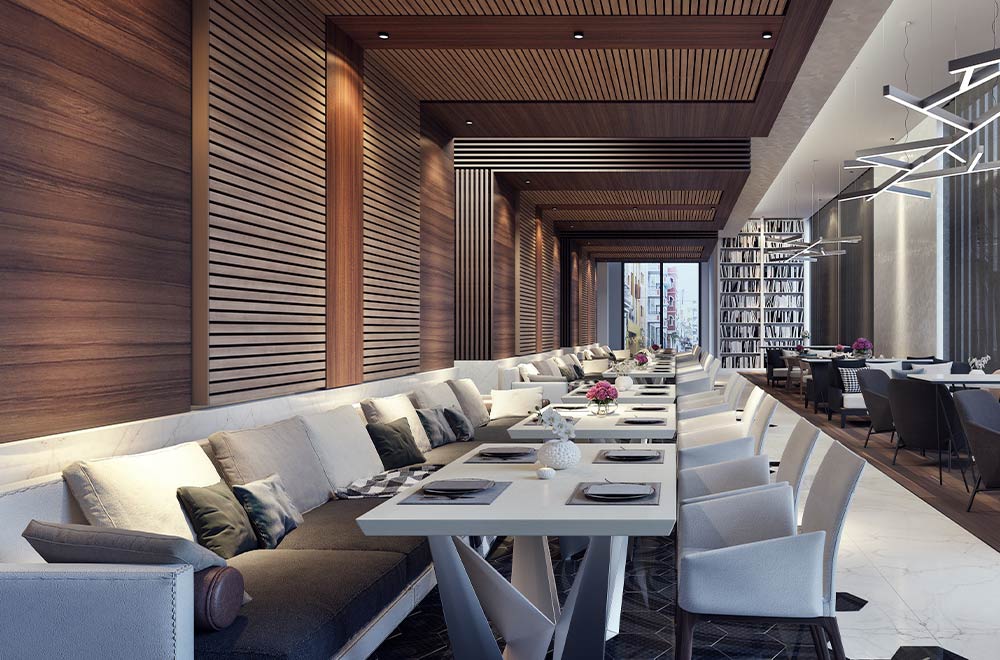Savor Authentic Asian Food With a Pan-Asian Spin for a Cooking Adventure
Beginning on a cooking journey through genuine Oriental cuisine, enhanced with a Pan-Asian twist, offers a special possibility to explore the rich tapestry of tastes that define the area's diverse culinary traditions. As you ponder these attracting meals, think about the cultural narratives and historical influences that form them, each bite using a tale waiting to be found. best asian restaurant Islamabad.

Discovering Pan-Asian Tastes
In the realm of global gastronomy, Pan-Asian food attracts attention for its amazing variety and the harmonious interplay of tastes from different Asian societies. This culinary technique celebrates the abundant traditions and distinct active ingredients located across the continent, producing a tapestry of preferences that is both enjoyable and appealing. Trick to Pan-Asian cuisine is its ability to balance different tastes-- pleasant, salty, spicy, and sour-- while highlighting the quality and quality of each component.
From the umami-rich soy sauce of Japan to the fiery chili peppers of Thailand, Pan-Asian food uses a comprehensive combination of flavors. These elements are commonly incorporated in inventive means, improving meals with layers of complexity. For example, the use of aromatic natural herbs such as lemongrass and cilantro, usual in Vietnamese and Thai food, adds a rejuvenating brightness to meals, while the incorporation of coconut milk delivers a creamy, rich texture.
The focus on fresh fruit and vegetables and fragrant spices makes sure that each dish is not just a banquet for the palate yet also for the detects. Pan-Asian food invites restaurants to get started on a cooking journey, exploring the vast and differed landscapes of Asian gastronomy with every bite.
Blend Dishes to Try
While Pan-Asian cuisine is commemorated for its typical tastes, the modern-day cooking landscape is progressively embracing blend dishes that mix these timeless aspects with influences from other areas. This ingenious technique not just honors the abundant heritage of Asian cooking arts however likewise presents novel preference experiences that attract modern tastes buds.
An archetype of such a blend meal is the Korean-Mexican taco, where marinated bulgogi beef is covered in a cozy tortilla, covered with kimchi and a hot gochujang-infused salsa. This mix marries the strong, tasty flavors of Korea with the vivid, fresh components of Mexican cuisine. Likewise, sushi burritos have actually obtained appeal, amalgamating the fragile creativity of Japanese sushi with the hearty, hand-held ease of a burrito, commonly including blend active ingredients like tempura shrimp and avocado with a drizzle of wasabi mayo.
One more notable meal is Thai curry ramen, which instills the luscious, fragrant seasonings of Thai curry right into the soothing broth of standard Japanese ramen, creating an unified blend that entices the senses. These blend dishes prolong beyond mere uniqueness; they represent a culinary dialogue in between societies, motivating exploration and innovation on the planet of Pan-Asian food.
Crucial Ingredients and Seasonings
To really appreciate Pan-Asian food, one must comprehend the essential ingredients and spices that develop its foundation. This varied culinary style attracts from an abundant tapestry of Eastern customs, employing a harmonious blend of appearances and flavors. Key components include soy sauce, fish sauce, and oyster sauce, which present a full-flavored umami depth vital to Eastern meals. Complementary to these are rice vinegar and mirin, offering a delicate acidity and sweet taste.
Aromatic elements are critical, with garlic, lemongrass, and ginger being ubiquitous throughout different Pan-Asian dishes. These active ingredients provide a great smelling base that enhances the complexity of flavors. Flavors visit such as celebrity anise, cardamom, and cinnamon present heat and character, echoing impacts from areas like China and India.
Cooking Strategies and Tips
Understanding the art of Pan-Asian food requires familiarity with its unique food preparation methods, each adding to the dynamic tapestry of tastes this culinary practice is celebrated for. Central to these techniques is the stir-fry, a quick food preparation method that maintains the dietary integrity and vivid shades of components. Utilizing a wok, the stir-fry method allows for also warm circulation, necessary go to website for accomplishing the characteristic structure and flavor balance of Pan-Asian dishes.
One more basic method is steaming, especially widespread in Chinese cuisine. This mild method maintains the all-natural tastes and nutrients of components, making it optimal for seafood and vegetables. Dumplings, a beloved staple, frequently benefit from steaming, causing soft, succulent structures.
Cooking, likewise indispensable, presents smoky depths to recipes such as Korean bulgogi or Japanese yakitori (Fine dining experience Islamabad). This technique usually includes marinading components, enabling flavors to permeate deeply before food preparation over an open flame or hot plate
Lastly, mastering the art of stabilizing flavors-- sweet, sour, salted, bitter, and umami-- is essential. Appropriately layering these elements can raise a dish from regular to remarkable, supplying a complex and pleasing cooking experience that personifies the significance of Pan-Asian cuisine.
Dining Experiences Worldwide
Throughout the globe, Pan-Asian why not try these out food provides an unrivaled eating experience, celebrated for its rich tapestry of flavors and lively discussions. This culinary sensation has gone beyond social limits, catching the hearts and tastes of food enthusiasts worldwide. In multicultural cities like New York, London, and Sydney, Pan-Asian dining establishments function as melting pots where culinary practices from Thailand, Japan, China, and past merge, supplying diners with a diverse mix of dishes that highlight the area's variety.
The global allure of Pan-Asian cuisine depends on its capacity to provide both credibility and technology. Chefs masterfully wed traditional active ingredients such as lemongrass, soy sauce, and miso with contemporary methods, resulting in recipes that are both familiar and refreshingly brand-new. This blend allows restaurants to start a culinary journey that values heritage while welcoming modernity.
Moreover, eating experiences are elevated via thoughtfully developed atmospheres that show the principles of Pan-Asian aesthetic appeals. From minimalist Japanese-inspired insides to lively Thai-themed areas, each restaurant uses an unique atmosphere that matches the culinary offerings. Therefore, customers are not merely taking in a meal yet partaking in a social experience, making Pan-Asian dining a truly international phenomenon.
Final Thought
The exploration of Pan-Asian food supplies an extensive understanding of the elaborate interaction of flavors and cooking traditions across Asia. By accepting fusion dishes such as Thai curry ramen and sushi burritos, the culinary trip not only highlights the versatility of traditional active ingredients but additionally showcases cutting-edge modern techniques. This gastronomic adventure, improved by cooking methods and important seasonings, supplies an one-of-a-kind opportunity to appreciate the social diversity and cooking creativity that define Pan-Asian cuisine on a worldwide scale.
Embarking on a cooking journey with genuine Oriental food, boosted with a Pan-Asian spin, provides a distinct opportunity to discover the abundant tapestry of flavors that define the area's diverse culinary practices.In the world of international gastronomy, Pan-Asian food stands out for its impressive variety and the harmonious interplay of tastes from different Oriental societies. Secret to Pan-Asian food is its capacity to balance contrasting flavors-- wonderful, salty, spicy, and sour-- while highlighting the freshness and high quality of each component.
